Back from a week in the Sierra Nevada and completion of a trip I’ve put off for too long, the Sierra High route. This is a classic crossing of the Sierra first pioneered in the 1930s by men like Otto Steiner, then made popular in the ’70s when Dave Beck defined an efficient line between Shephard’s Pass on the east side, and the Pear Lake Hut trailhead at Wolverton on the west side.
This particular trip was spectacular. One of the guides on the trip, Peter Leh has been leading this trip for 30 years with ASI and said it was perhaps the best conditions he has ever experienced for the Sierra High Route. The guide for our group, Geoff Clarke agreed. After a winter of heavy snowfall and regular precipitation the weather finally cooperated and abated for a week of sunshine and moderate temperatures. The result was an easy passage through the Sierra in spring conditions with corn snow and spectacular views everywhere.There were lots of lessons learned on this trip which I’ll delve into in future posts, but for now this blog needs some fresh images. So, without further ado, here are a few highlights from the trip with more to follow in the days to come, including some insight on gear used that can make or break such a trip.
Day 1
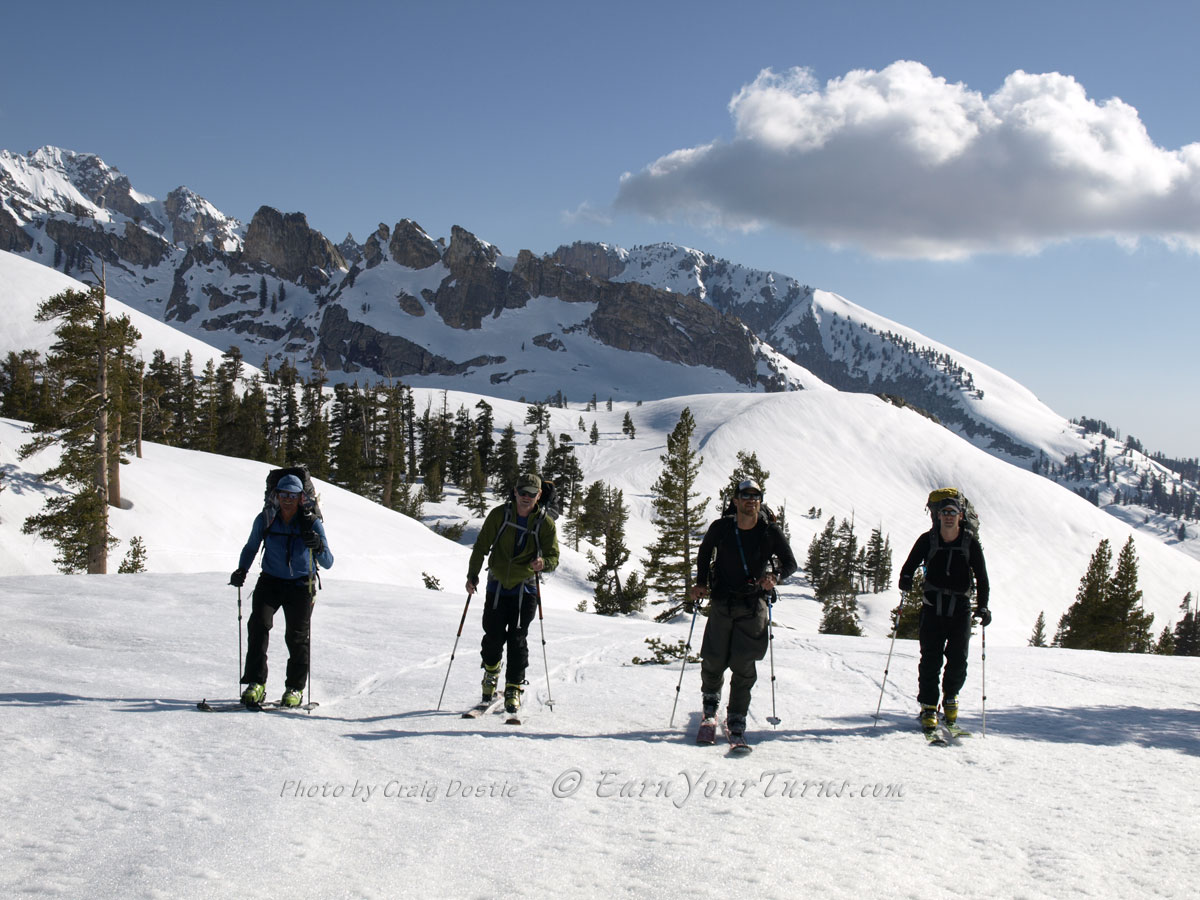
Smiles all around as we realize the end of lugging ~39+ pound packs is near (we added a few red flag items). The cirque around Pear Lake Hut is behind us, the Tablelands in front.
Day 2
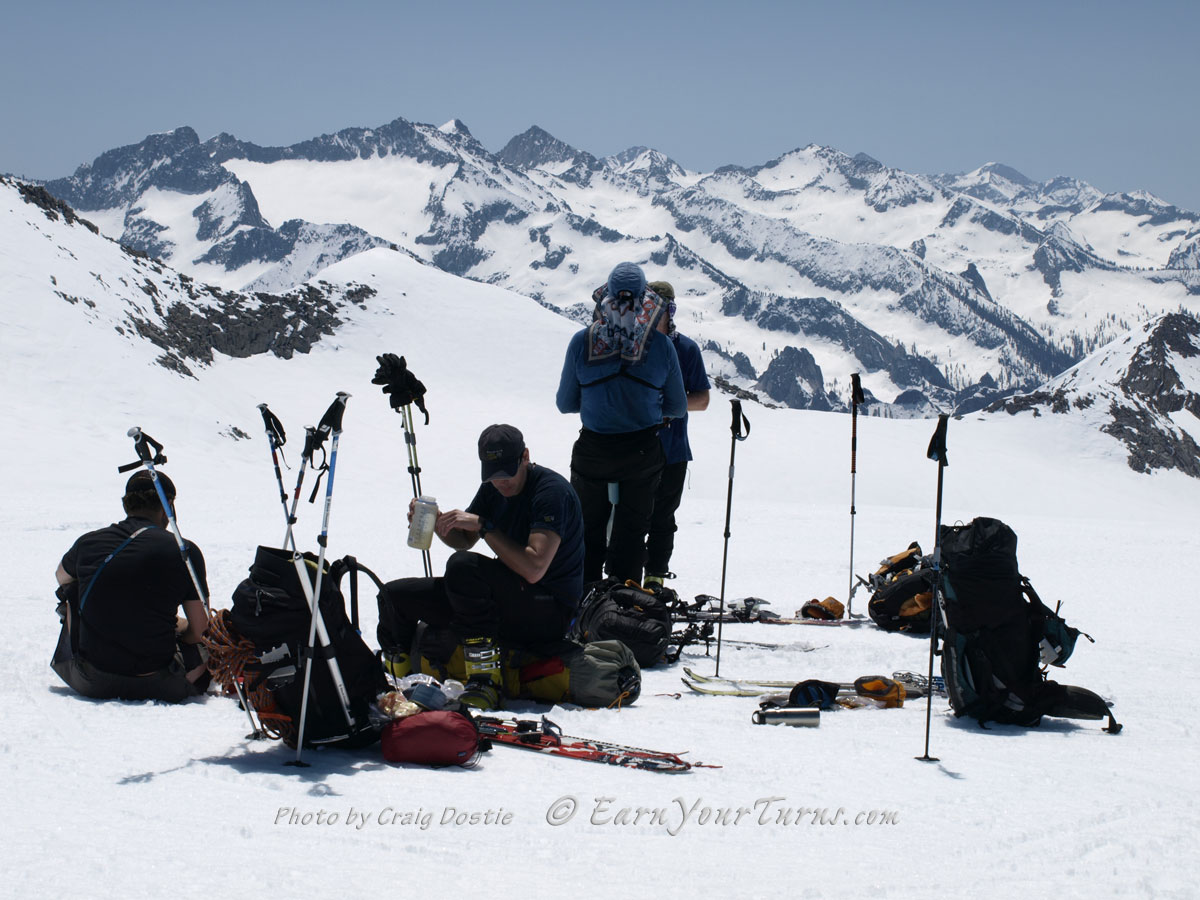
The view from the top of Tablelands, looking SE. This was the BIG day with three passes to cross, this being the first of three.
Day 3
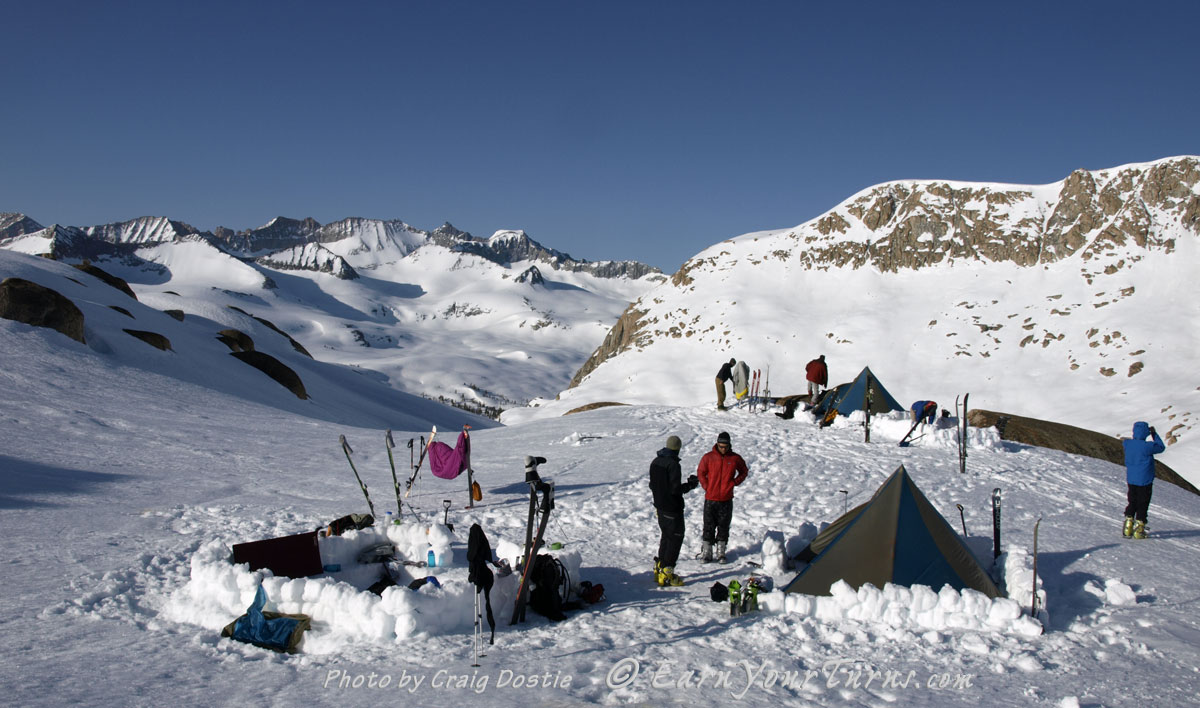
Looking S towards the Kaweahs from Camp 3 in Milestone Basin, where the E and W parties met for the evening.
Day 4
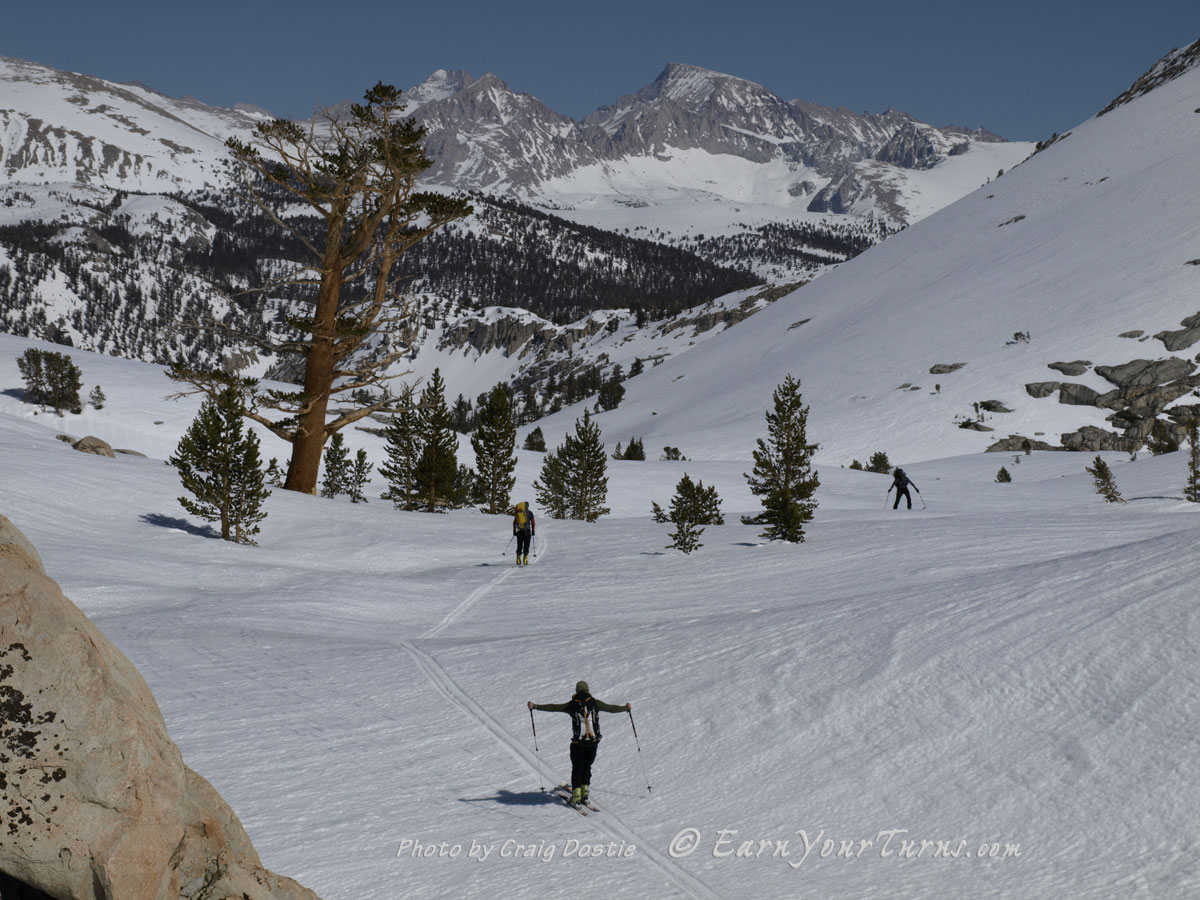
Milestone Pass is considered the crux of the route. It is certainly the physical high point, and for our group, the best day of the tour. Mt. Whitney in the background as we approach Camp 4 at the headwaters to the Kern River watershed.
Day 5
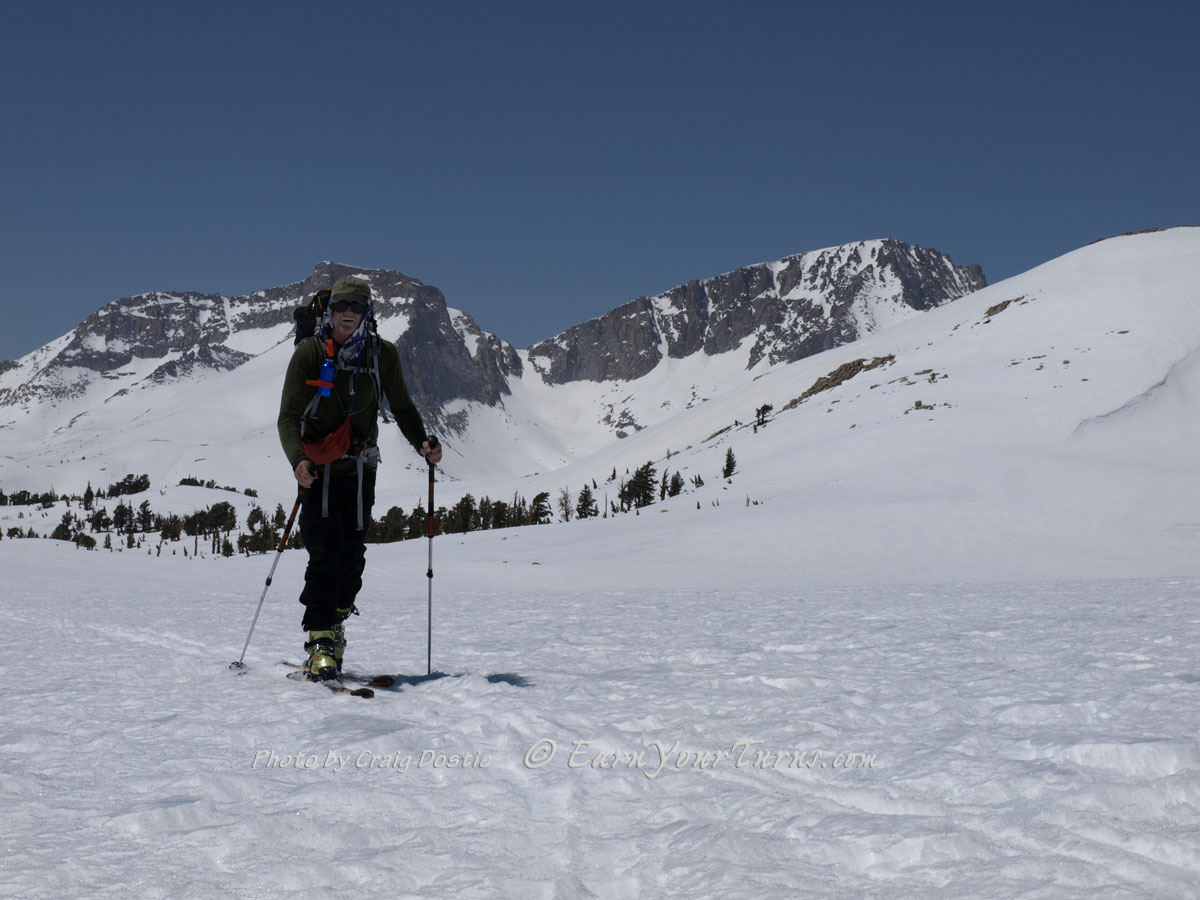
There are several slogging moments on the High Route, but crossing the Tyndall Plateau is perhaps the biggest while heading east. Terry Fisher enjoys the view.
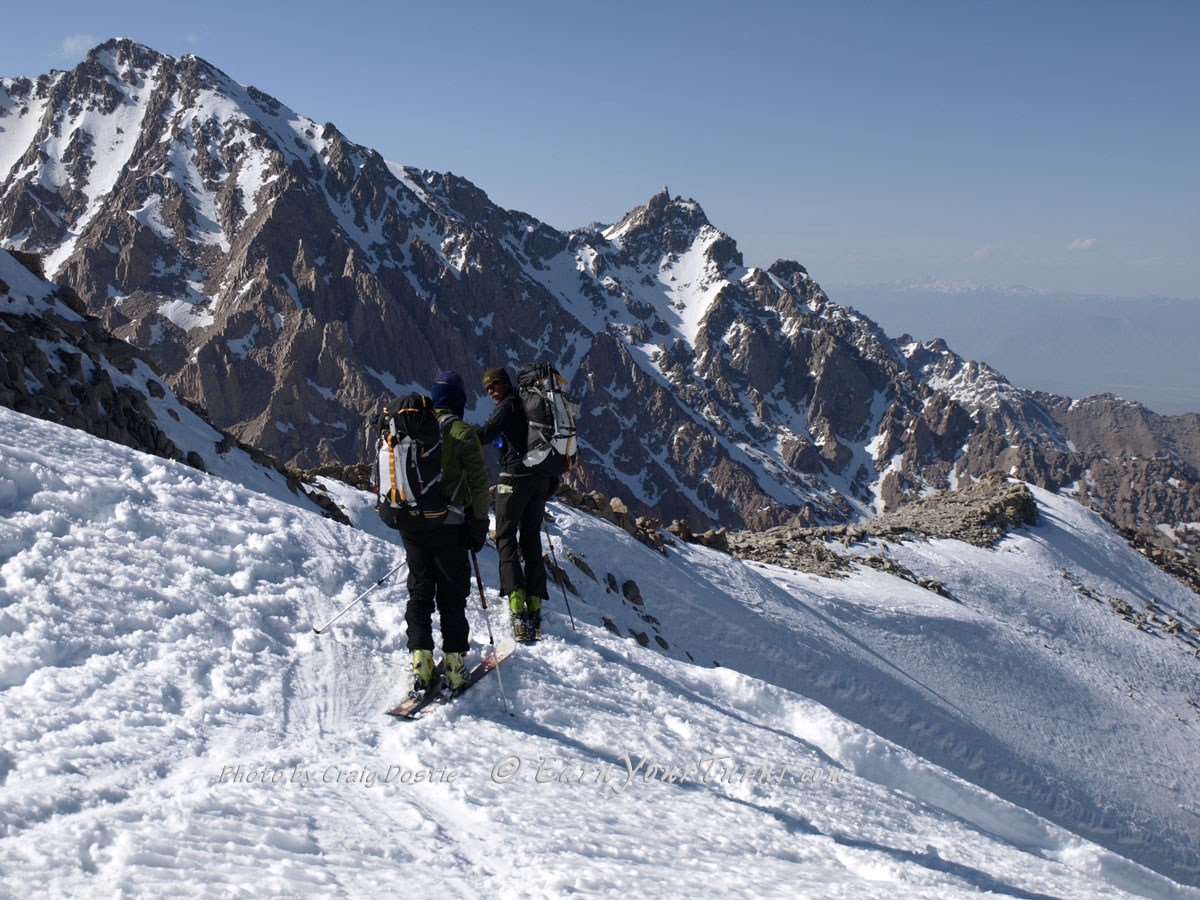
The payoff for bucking the trend to do the Sierra High Route in traditional fashion (E-W) is the option to ski 4,000 vertical feet from the Sierra Crest to the last camp of the tour.
Day 6
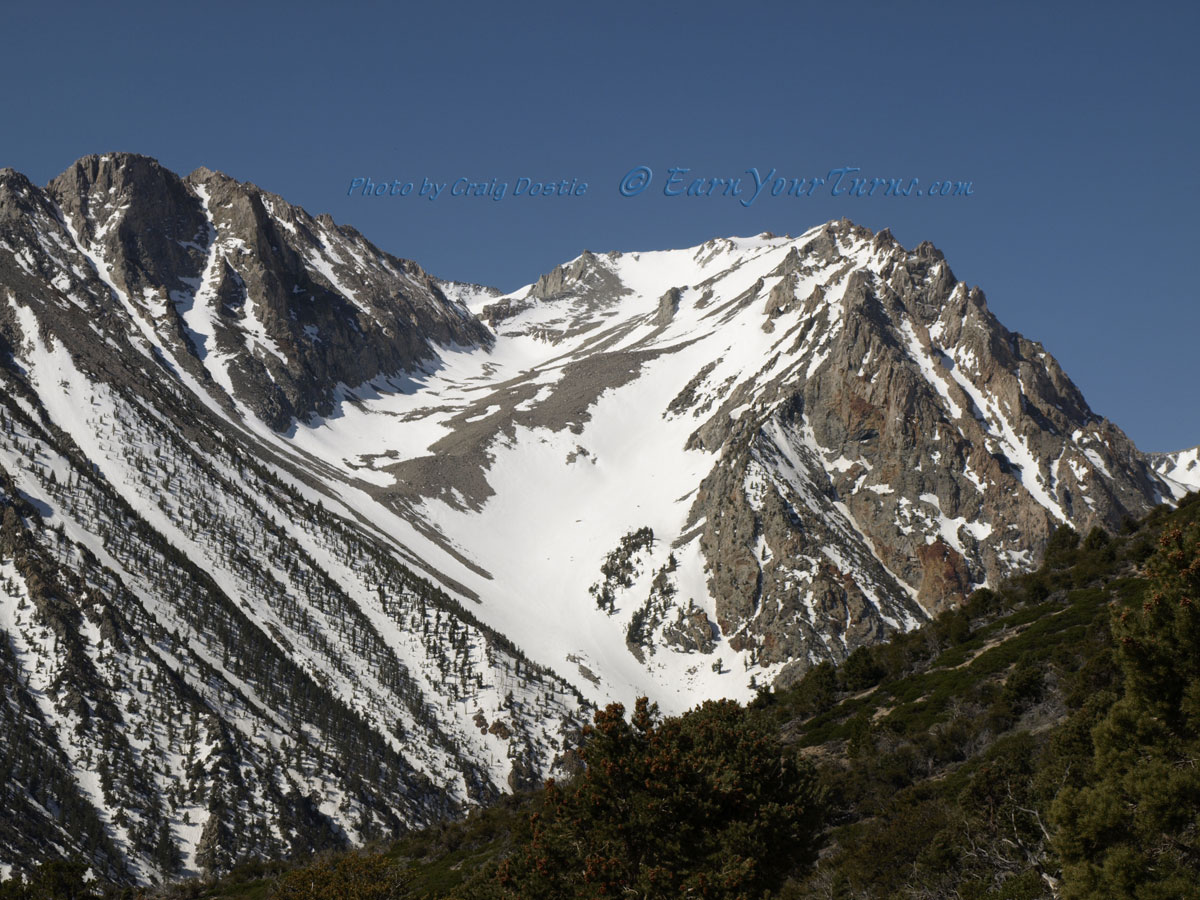
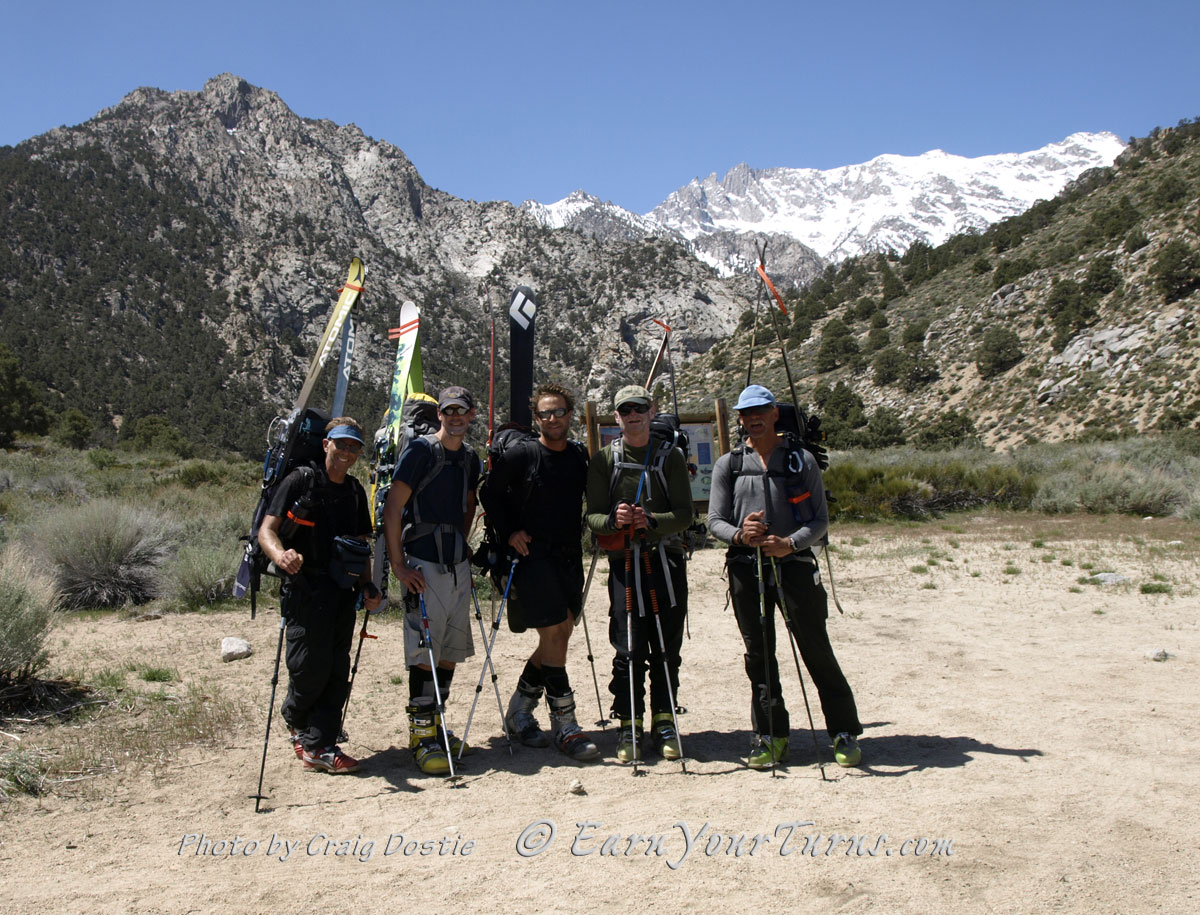
And done! Group shot at the Symmes Creek trailhead.
L-R: Craig Dostie, Mike Mulick, Ben Taylor, Terry Fisher, Geoff Clarke.
More to come in the next few weeks. If you haven’t done this trip, this is definitely one for your classic bucket list. Don’t miss it!

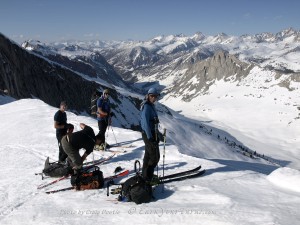
3 comments
1 ping
Excellent route with cooperative weather is appears. Gud on ya!
Which skis and binding did you use?
Author
Went as light as I dared with a big pack. Atomic RT-86 (177cm) with Voile Switchbacks. Considered upgrading the Switchbacks to the X2 version but since I didn’t have the time to add inserts stuck with what I had mounted (and epoxied).
The bigger Q is, what skins did I use? Planned to go with my 5 year old Glidelites but the glue started acting funny (gooey) within a week after posting my “final” review of them. After 5 years I can hardly complain. It was a choice between re-gluing the Glidelites or trimming and outfitting a fresh pair of ClipSkins. I went with the clippers. Full report to follow.
Craig –
I’ll be very interested to hear how the clip skins did holding an edge and sliding in those rare circumstances where you leave your skins on for a slight downhill roll in an overall climb.I can’t get my head around how the clips wouldn’t compromise edging when doing that on a hard traverse (Frozen corn etc.)
Look fwd to your wisdom.
Joe
[…] occurred. So I took a calculated risk and fabbed a pair the night before a six day crossing of the Sierra High Route, West to East. It was that or reglue my fave pair of Glidelite skins that began showing symptoms of […]